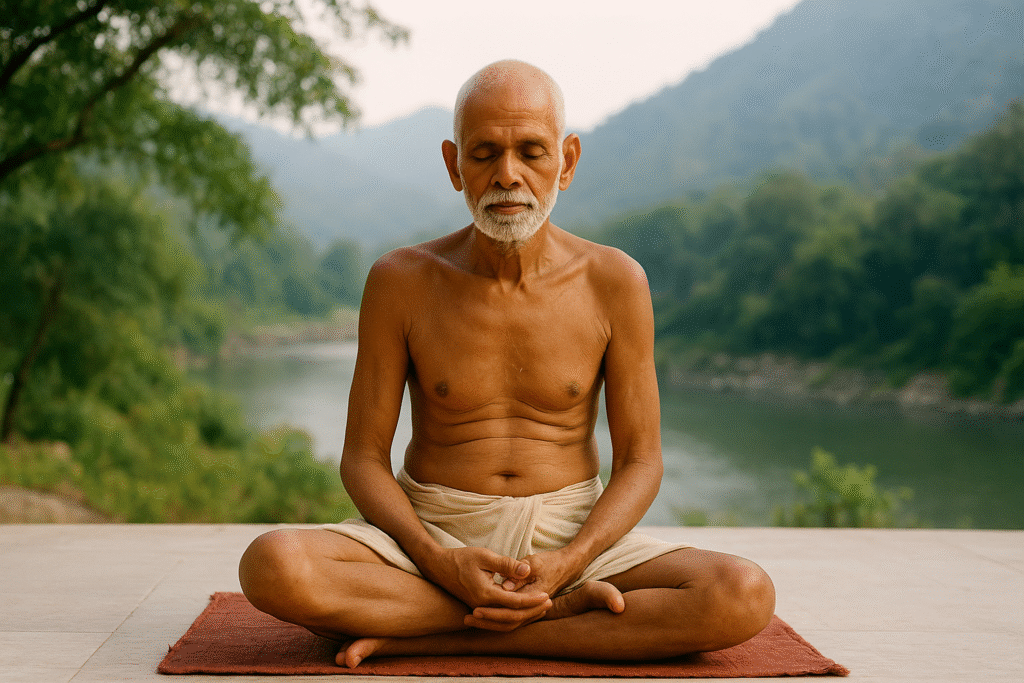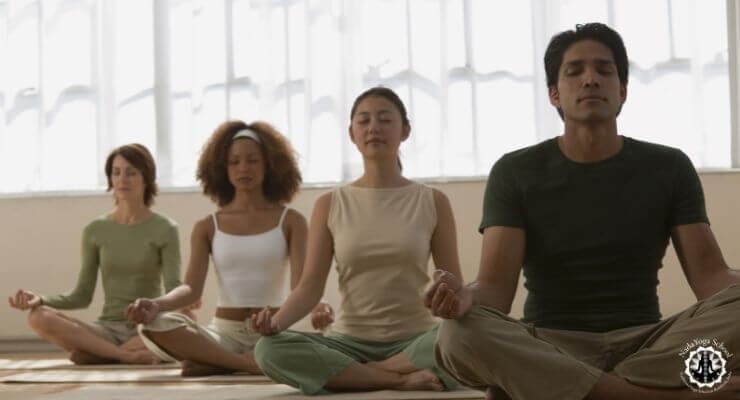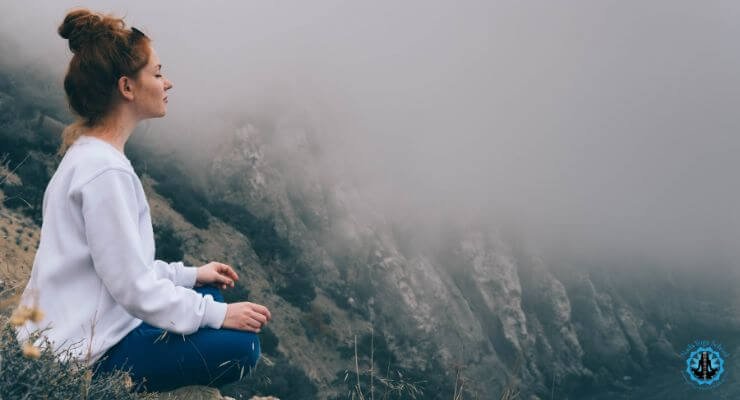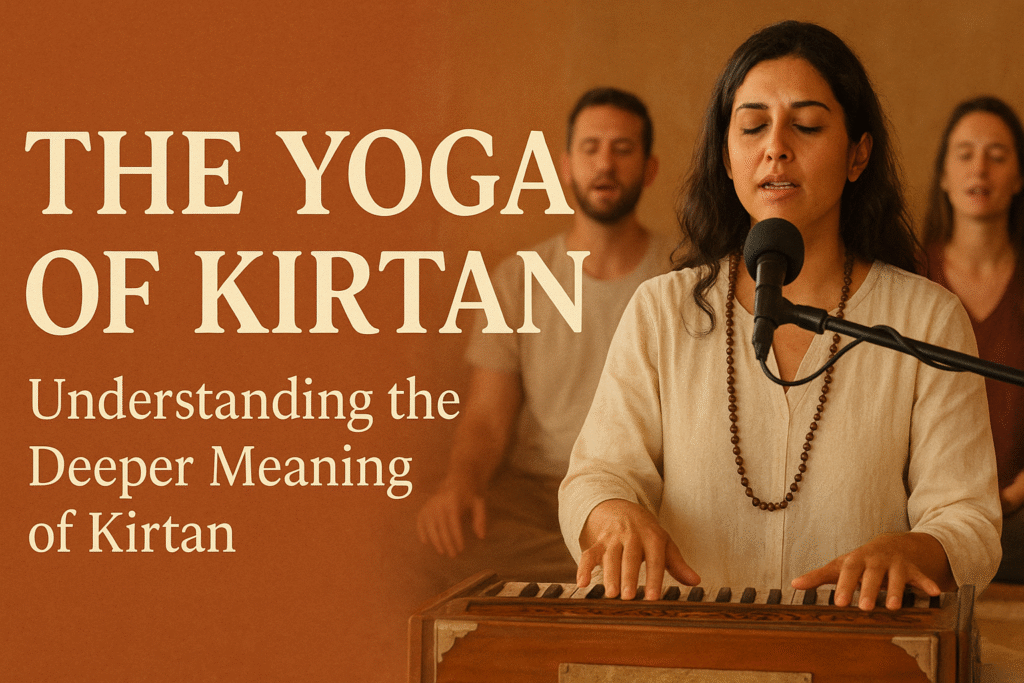In the sacred land of Rishikesh, where the Himalayas meet the Ganga, seekers have long journeyed to uncover the deeper truth of existence. Among the many paths to self-realization, Self-Enquiry Meditation, taught by the enlightened sage Sri Ramana Maharshi, stands out as the most direct and powerful method.
This practice, known in Sanskrit as Ātma Vichāra, invites us to ask a single transformative question:
“Who am I?”
Unlike other meditative techniques that focus on the breath, mantras, or visualization, self-enquiry goes straight to the root of consciousness, to the very source of the “I” itself.
Who Was Sri Ramana Maharshi?
Sri Ramana Maharshi (1879–1950) was one of India’s greatest spiritual masters, renowned for his simplicity, silence, and profound wisdom. At the age of sixteen, he experienced a spontaneous awakening, a direct realization of the Self that forever transformed his life.
“Be still. Know the Self within you as the eternal witness. This alone is liberation.”
He settled at Arunachala Hill in Tiruvannamalai, where seekers from around the world came to sit in his presence. His teaching was beautifully simple and universal:
What Is Self-Enquiry Meditation (Ātma Vichāra)?
At the heart of Ramana Maharshi’s teachings lies Self-Enquiry, the method of turning the mind inward to discover the source of the “I” thought, the root of ego and identification.
Instead of engaging with thoughts, Self-Enquiry directs your attention to the silent awareness from which all thoughts arise. It’s not about finding intellectual answers but about experiencing your true nature directly.
The Core Question
The entire practice revolves around this inquiry:
“Who am I?” (Nāṉ Yār?)
Every time a thought arises, Ramana advised asking:
- “To whom does this thought arise?”
- The answer will be “To me.”
- Then ask, “Who am I?”
As you persist, thoughts gradually lose power, and attention dissolves into the silent source, pure consciousness.
The Philosophy Behind the Practice
According to Ramana Maharshi, the ‘I’-thought is the first seed from which all other thoughts sprout. The mind identifies with the body, emotions, and external world through this single illusion of individuality.
By tracing this thought back to its origin, the ego dissolves, revealing the Self (Ātman), the eternal awareness that was always present.
“The ‘I’-thought is the root of all thoughts. When the root is destroyed, all else disappears.”
This teaching resonates deeply with Nada Yoga philosophy, which also sees sound, vibration, and awareness as interconnected paths to realizing the eternal Self.
How to Practice Self-Enquiry Meditation
You don’t need elaborate rituals or external tools to begin. All you need is a quiet space and the willingness to turn inward.
Step-by-Step Practice
- Find a Quiet Space
Sit comfortably with your spine straight. Let your body relax and mind settle. - Turn Inward
Bring your attention from the outer world to the inner sense of being, the feeling of “I am.” - Ask Gently:
- “Who am I?”
- “Where does this ‘I’ arise from?”
- “What is the source of this awareness?”
- Observe Without Judgment
When thoughts appear, don’t resist them. Simply ask, “To whom does this thought arise?” When the answer “to me” appears, inquire deeper: “Who am I?” - Rest in the Awareness
As thoughts fade, stay with the silent presence that remains. This stillness is your true Self, vast, timeless, and beyond the mind. - Consistency Matters
Practice daily, even for a few minutes. Gradually, the ego weakens, and awareness becomes your natural state.
Benefits of Self-Enquiry Meditation
While Ramana Maharshi emphasized realization over results, modern practitioners find that Self-Enquiry naturally brings numerous benefits:
- Deep Mental Clarity: The practice dissolves confusion and overthinking.
- Emotional Balance: It releases the grip of desires and fears.
- Inner Peace: By detaching from thoughts, one experiences profound stillness.
- Freedom from Ego: The illusion of separateness fades, replaced by unity consciousness.
- Spiritual Awakening: It leads to direct realization of the Self, beyond body and mind.
“When the mind becomes still, the Self shines of its own accord.” – Sri Ramana Maharshi
Self-Enquiry and Nada Yoga: The Inner Sound of Silence
At Nada Yoga School in Rishikesh, the teachings of sound (Nada) and self-awareness (Vichāra) beautifully complement one another.
Both paths aim to silence the restless mind and guide the seeker to the inner vibration, the soundless sound (Anahata Nada) that arises from pure consciousness.
While Nada Yoga uses sacred sound and vibration to dissolve ego boundaries, self-enquiry removes ignorance through direct awareness.
Together, they open the gateway to the same realization, the infinite Self.
Practicing in Rishikesh: The Perfect Setting for Self-Enquiry
There is no better place to practice Self-Enquiry Meditation than Rishikesh, the world’s yoga capital. Surrounded by mountains and the sacred Ganga, the serene energy naturally draws one inward.
At Nada Yoga School, we integrate the wisdom of great masters like Ramana Maharshi into our Yoga Teacher Training Courses (YTT 200, 300, and 500 Hours), combining Nada Yoga, Meditation, Mantra, and Self-Reflection to cultivate awareness on all levels: physical, mental, and spiritual.
Final Reflections: The Silence Within You
Ramana Maharshi’s Self-Enquiry Meditation is not a technique to be mastered but a return to what you already are: the unchanging witness behind all experience.
When practiced with sincerity, it transforms ordinary awareness into pure presence.
In Ramana’s own words:
“Your own Self-Realization is the greatest service you can render the world.”
At Nada Yoga School, we invite you to explore this timeless practice, not as a philosophy, but as a living experience. In the silence of the Self, the true essence of yoga is revealed.





